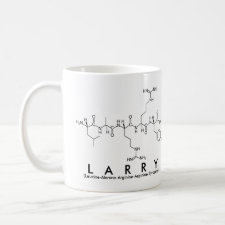
Authors: Stanker LH, Muldoon MT
Article Title: Development of molecular imprints for residue analysis.
Publication date: 1996
Journal: Journal of Automatic Chemistry
Volume: 18
Issue: (3)
Page numbers: 71.
Alternative URL: http://www.ncbi.nlm.nih.gov/pmc/articles/PMC2548056/pdf/JAMMC-18-071.pdf
Abstract: Development of molecular imprinted polymers is a technology that utilizes functionalized polymers formed in the presence of a 'print' molecule (the analyte of interest). The polymer is then ground into a fine powder and the analyte extracted from the polymer leaving a molecular imprint of the analyte in the polymer. Molecular recognition is attributed to the formation of functional groups in a particular arrangement within the polymer matrix which conforms to that of the print molecule used in polymer synthesis. Shape-selective cavities also are thought to contribute to analyte binding. The authors have developed molecularly imprinted polymers to the following agrochemicals: atrazine, a commonly used herbicide; salinomycin, a widely used anticoccidial drug; and ceftiofur, an antibiotic used in veterinary medicine. The use of these MIPs as reagents for the development of analyte specific MIAs has been investigated. In the case of atrazine, specific binding was significantly influenced by the type of solvent used. Organic solvents resulted in increased binding of analyte to the atrazine. The use of MIPs as the solid phase for HPLC has also been investigated; results with the atrazine MIP demonstrated that various -triazines were selectively retained. Capacity factors ranging from 0 to 30 were observed. The use of MIPs as solid phase matrices for extraction and clean-up of biological sample extracts has been studied. An anti-atrazine polymer was used to clean up organic extracts of beef tissues. In these experiments a small solid phase extraction was prepared containing 500 mg of the polymer. Tissue extracts were applied to the column and contaminants were washed through. Atrazine retained on the column was then eluted from the column by increasing the polarity of the solvent. Both reversed-phase HPLC and immunochemical (ELISA) analyses were performed on column eluent fractions. Following molecularly-imprinted solid phase extraction (MISPE), a recovery of 103% was observed. Analysis of the crude tissue extracts from the 0-1 ppm atrazine-spiked beef liver by ELISA gave a recovery of 9%, however, following MISPE the analyte recovery increased to 57%. These experiments demonstrate that compounds are present in crude extracts of beef tissue that inhibit the ELISA, but these interfering compounds could be readily removed using MISPE. Thus, MISPE, in combination with an immunoassay such as an ELISA, represents a rapid, inexpensive system for analysis of residues in complex biological matrices and for high sample throughput environmental minitoring programs



Join the Society for Molecular Imprinting

New items RSS feed
Sign-up for e-mail updates:
Choose between receiving an occasional newsletter or more frequent e-mail alerts.
Click here to go to the sign-up page.
Is your name elemental or peptidic? Enter your name and find out by clicking either of the buttons below!
Other products you may like:
 MIPdatabase
MIPdatabase









